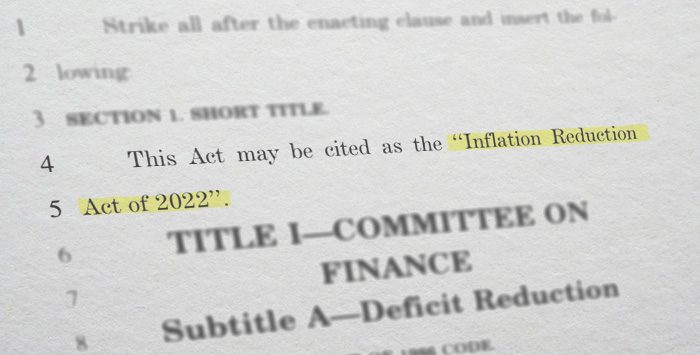What are the changes to Medicare benefits for 2026?
Medicare changes for 2026 include increases for Medicare Part B and Part A premiums and cost-sharing, changes in average premiums for Medicare Advantage and Part D plans, a slight decrease in the maximum out-of-pocket limit for Medicare Advantage plans, adjustments to income-related premium surcharges for Medicare Part B and Part D, an increase in the Part D deductible and the cap on out-of-pocket costs for drugs covered under an enrollee’s Medicare Part D coverage, and new negotiated pricing for some drugs covered under Part D.
Here’s a full rundown of changes to Original Medicare cost-sharing and premiums, the high-income brackets, improvements to Medicare Part D prescription drug coverage, and more.
Medicare Part D premiums and deductibles
Medicare Part D is private prescription drug coverage for Medicare beneficiaries. Part D coverage can be offered as a stand-alone plan (PDP) or integrated with a Medicare Advantage plan (MA-PD). Original Medicare does not provide outpatient prescription drug benefits, so enrollees need Part D unless they have creditable drug coverage from another source, such as a current or former employer.
How is Medicare Part D coverage changing in 2026?
Starting in 2025, the Inflation Reduction Act implemented a $2,000 cap on out-of-pocket costs for drugs covered by Part D plans, and gave Part D enrollees the option to spread their drug costs out in equal payments throughout the year. The out-of-pocket cap is indexed annually. For 2026, it will increase to $2,100.
The Part D donut hole was eliminated altogether as of 2025, and that will continue to be the case in 2026. The Inflation Reduction Act will also continue to ensure that Medicare Part D prescription drug enrollees can receive recommended vaccines at no cost, and covered insulin products with copays capped at $35/month.
To address concerns about premium increases for 2025 stemming from the Inflation Reduction Act changes, the federal government announced a voluntary PDP premium stabilization program for 2025, under which participating insurers would receive additional federal funding to reduce overall premiums. Although the premium stabilization program is voluntary for insurers, 99% of PDP enrollees were in plans that opted into the program for 2025.
For 2026, the premium stabilization program will still exist, but it will provide smaller subsidies to the Part D plans ($10/month instead of $15/month), and it will allow participating plans to increase premiums by a larger amount (up to $50/month, as opposed to the $35/month cap for 2025). CMS has confirmed that “nearly all” PDP enrollees are in plans that have also opted into the premium stabilization program for 2026.
And according to CMS, average PDP premiums are decreasing from $38.31/month in 2025 to $34.50/month in 2026, For 2025 coverage, PDP premiums vary from as little as $0/month to more than $100/month.
How much is the Medicare Part D deductible in 2026?
The maximum Medicare Part D deductible will be $615 in 2026, up from $590 in 2025. Part D plans can have lower deductibles, or no deductible at all. But if they have a deductible, it can’t be more than $615 in 2026.
Or call
866-472-0949 (TTY 771) to speak to a licensed insurance agent
(Mon-Fri 8am-9pm, Sat 10am-7pm ET)
Medicare Advantage costs and enrollment
Medicare Advantage plans combine Medicare Part A, Part B, and usually Part D, into one private plan. These plans also generally include various additional benefits that aren’t covered by Original Medicare, such as routine dental and vision.
How are Medicare Advantage costs changing for 2026?
Average Medicare Advantage premiums (paid in addition to the premium for Medicare Part B) are decreasing slightly for 2026. The average premium in 2025 is $13.32/month for Medicare Advantage plans with integrated Part D coverage (MA-PD), and that’s decreasing to an average of $11.50/month in 2026. (That’s just an average; actual premiums vary widely. Most enrollees are in plans with no separate premium, so they only pay the premium for Medicare Part B.)
Some insurers that offer Medicare Advantage plans are planning to exit the market or scale back their service areas at the end of 2025. We also saw this at the end of 2024,, in addition to benefit changes that included (for some plans) higher deductibles, coinsurance instead of copays, reductions in supplemental benefits, or provider network changes.
But CMS has clarified that there will be a total of 5,600 Medicare Advantage plans across the country in 2026, down only slightly from 5,633 in 2025.
Is the Medicare Advantage out-of-pocket maximum changing for 2026?
Yes, the Medicare Advantage maximum out-of-pocket limit (for in-network services covered under Medicare Part A and Part B) will decrease slightly to $9,250 in 2026. Unlike most recent years when the out-of-pocket limit has increased each year, the 2026 limit is a reduction from the $9,350 limit that applies in 2025. But average out-of-pocket caps are typically well below the allowable maximum.
Medicare Part B premiums and deductible
Medicare Part B covers outpatient and physician costs. Medicare Part B has out-of-pocket costs when enrollees receive covered care — an annual deductible and 20% coinsurance — and it also has a monthly premium that’s paid by nearly all enrollees (high-income enrollees pay more than the standard premium for Part B).
Is the Medicare Part B standard premium increasing for 2026?
The 2026 Part B premium for most enrollees is $202.90/month, up from $185/month in 2025.
For most Medicare Part B enrollees, the premiums are automatically deducted from Social Security checks. The 2.8% cost-of-living adjustment (COLA) for 2026 will add about $56/month to the average retiree’s check. So the COLA will more than cover the full increase in Medicare Part B premiums for virtually all enrollees, and most Social Security recipients will still see larger checks in 2026, despite the larger Part B premium being withheld.
But it’s also important to note that the projected Part B premium increase will eat up almost a third of the average COLA amount, leaving retirees with only about two-thirds of their COLA left over to cover other expenses.
How much is the Medicare Part B deductible for 2026?
The 2026 Medicare Part B deductible is $283, up from $257 in 2025.
Some enrollees have supplemental coverage that pays their Medicare Part B deductible. This includes Medicaid, employer-sponsored plans, and Medicare Supplement (or Medigap) Plans C and F. But since the beginning of 2020, Medigap Plans C and F have no longer been available to newly eligible enrollees (this is discussed in more detail below).
Medicare Advantage plans set their own copays and deductibles. So although their benefit designs fluctuate from one year to another, the changes aren’t the same as the deductible and copay changes that apply to Original Medicare.
Medicare Part A premiums, deductible, and coinsurance
Medicare Part A covers hospitalization costs. Medicare Part A has out-of-pocket costs when enrollees need hospital care, although most enrollees do not pay a premium for Medicare Part A. But you’ll have to pay a premium for Medicare Part A if you don’t have 40 quarters of work history (or a spouse with 40 quarters of work history).
Are Medicare Part A premiums increasing in 2026?
Roughly 1% of Medicare Part A enrollees pay premiums; the rest are entitled to free premiums based on their earnings history or a spouse’s. For enrollees who pay premiums for Medicare Part A, the premiums are increasing for 2026. Depending on how much work history the person has, the 2026 Part A premiums (for the 1% of beneficiaries who have to pay a premium) are either $311/month or $565/month, up from $285/month or $518/month in 2025.
Is the Medicare Part A deductible increasing for 2026?
Yes, the Medicare Part A deductible increased for 2026, rising to $1,736 (up from $1,676 in 2025).
Medicare Part A has a deductible that applies to each benefit period, rather than a calendar year deductible like Medicare Part B or typical health insurance plans (a Medicare benefit period begins when a person is admitted for inpatient care, and ends when they have not received any inpatient care for at least 60 days). The deductible generally increases each year, as is the case for 2026.
The Medicare Part A deductible applies to all Original Medicare enrollees who receive inpatient care, although many enrollees have supplemental coverage that pays all or part of the Medicare Part A deductible.
How much will Medicare Part A copayments be in 2026?
The Medicare Part A deductible covers the enrollee’s first 60 inpatient days during a benefit period. If the person needs additional inpatient coverage during that same benefit period, there’s a daily copayment (this used to be called coinsurance, but Medicare now refers to it as a copayment).
The daily copay for inpatient days 61-90 is $434/day in 2026 (up from $419/day in 2025), and the copay for lifetime reserve days in 2026 is $868/day (up from $838/day).
How much is the Medicare Part A skilled nursing facility copayment in 2026?
Original Medicare covers up to 100 days in a skilled nursing facility care if the patient has an inpatient hospital stay of at least three days before being transferred to a skilled nursing facility. After day 100, all skilled nursing facility expenses are the responsibility of the beneficiary (unless they have supplemental coverage that provides additional benefits).
Although the first 20 days of a covered stay in a skilled nursing facility have no cost-sharing, there’s a copayment that applies to days 21 through 100 in a skilled nursing facility. That copayment is $217/day in 2026, up from $209.50 per day in 2025,
Medicare supplement insurance (Medigap) plans
If your Medicare Advantage plan won’t be offered in 2026 and thus can’t be renewed, you can pick a different Medicare Advantage plan during open enrollment. But you also have an option to switch to Original Medicare and you’ll have guaranteed issue access to Medigap. There’s no federally required annual enrollment opportunity for Medigap, so enrollees are often subject to medical underwriting by Medigap insurers if they want to switch from Medicare Advantage to Medigap. But that’s not the case if the person’s Medicare Advantage plan will no longer be available.
Medigap premiums generally increase from one year to the next. But unless you’re in a state that offers some sort of window for guaranteed-issue access to other plans, your ability to switch to a different plan will depend on your medical history.
Can I still buy Medigap Plans C and F?
As a result of the Medicare Access and CHIP Reauthorization Act of 2015 (MACRA), Medigap Plan C and the high-deductible Medigap Plan F are no longer available for purchase by people who become newly eligible for Medicare on or after January 1, 2020.
People who became Medicare-eligible prior to 2020 can keep Medigap Plans C or F if they already have them or apply for those plans at a later date, including for 2026 coverage. (Medical underwriting applies in most states if you’re switching from one Medigap plan to another after your initial enrollment window ends, but some states have guaranteed-issue Medigap plans even after the initial enrollment period has ended.)
Medigap Plans C and F cover the Medicare Part B deductible in full (the Part B deductible is $283 in 2026). But other Medigap plans require enrollees to pay the Medicare Part B deductible themselves. The idea behind the change is to discourage overutilization of services by ensuring that enrollees have to pay at least something when they receive outpatient care, as opposed to having all costs covered by a combination of Medicare Part B and a Medigap plan.
Because the high-deductible Medigap Plan F was discontinued for newly eligible enrollees as of 2020, there is a high-deductible Medigap Plan G available instead.
The income-related monthly adjusted amount (IRMAA)
Were there inflation adjustments for Medicare beneficiaries in high-income brackets for 2026?
Yes. The threshold for high-income surcharges (and each of the income brackets) increased again for 2026, as did the surcharges at each income level.
Medicare beneficiaries with high incomes pay more for Medicare Part B and Medicare Part D prescription drug coverage. But what exactly does “high income” mean? The high-income brackets were introduced in 2007 for Medicare Part B and in 2011 for Medicare Part D prescription drug plans, and for several years they started at an income of $85,000 ($170,000 for a married couple).
But the income brackets began to be adjusted for inflation as of 2020. For 2025, the surcharge starts to be added at an income level of $106,000 for a single individual. This threshold increased to $109,000 for 2026. The surcharge in 2026 will be based on modified adjusted gross income reflected on 2024 tax returns, since those are the most recent tax returns on file when 2026 begins; there’s an appeals process you can use if your income has changed since then.
Including the IRMAA surcharge, the Part B premium for beneficiaries subject to IRMAA ranges from $284.10/month to $689.90/month, depending on income.
The 2026 Medicare Part D high-income surcharge (added to the beneficiary’s plan-specific premium) ranges from $14.50/month to $91/month, depending on income.
Learn more about the income-related monthly adjusted amount (IRMAA).
Louise Norris is an individual health insurance broker who has been writing about health insurance and health reform since 2006. She has written hundreds of opinions and educational pieces about the Affordable Care Act and Medicare for healthinsurance.org and medicareresources.org.







